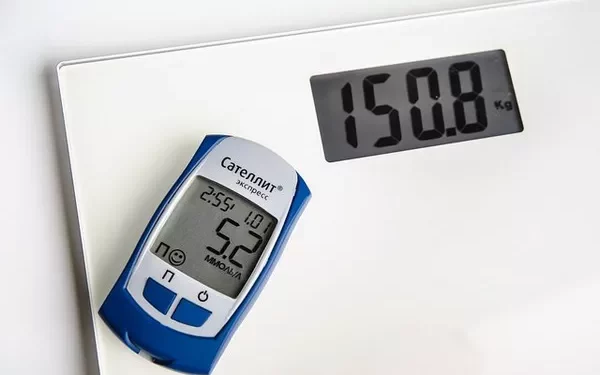Blood glucose monitoring is an essential tool in managing diabetes. Among the various tests used to track blood sugar levels, the A1C test is one of the most reliable and commonly used indicators. A1C, also known as HbA1c or glycated hemoglobin, measures the average blood sugar levels over the past two to three months. This test provides a clearer picture of long-term glucose control, unlike daily finger-stick measurements or continuous glucose monitoring, which capture short-term fluctuations.
Understanding the optimal A1C range is crucial for individuals with diabetes and those at risk of developing the condition. Maintaining A1C levels within the recommended range helps reduce the risk of developing complications related to high blood sugar, such as cardiovascular disease, nerve damage, kidney disease, and blindness. In this article, we will discuss the ideal A1C range, what factors influence A1C levels, how to manage and achieve optimal A1C levels, and the significance of regular monitoring.
What is A1C and Why is it Important?
A1C is a blood test that measures the percentage of hemoglobin (a protein in red blood cells) that is coated with sugar (glycated). When blood glucose levels are high, excess glucose molecules attach to hemoglobin, forming glycated hemoglobin. The higher a person’s average blood sugar levels are over the past few months, the more glycated hemoglobin they will have. The A1C test reflects this process and provides an estimate of how well blood sugar levels have been controlled over time.
The A1C test is important because it reflects overall blood glucose management and is a strong predictor of the risk of complications in diabetes. For individuals with diabetes, maintaining A1C levels within a target range can significantly reduce the risk of developing diabetic complications such as:
Heart disease and stroke: High A1C levels are linked to an increased risk of cardiovascular problems.
Kidney damage (diabetic nephropathy): Chronic high blood sugar levels can damage the kidneys over time.
Nerve damage (neuropathy): Persistent hyperglycemia can lead to nerve damage, resulting in pain, tingling, or loss of sensation.
Eye problems (retinopathy): High blood sugar can damage the blood vessels in the eyes, leading to vision problems or blindness.
Wound healing issues: Elevated A1C levels can impair the body’s ability to heal wounds.
The Ideal A1C Range for People Without Diabetes
For individuals without diabetes, the target A1C level should generally be below 5.7%. This indicates normal blood glucose regulation. In fact, a level between 4% and 5.6% is considered normal, while anything above 5.7% is classified as prediabetes. Individuals in this category are at higher risk of developing type 2 diabetes if they do not adopt healthier lifestyle habits, such as a balanced diet and regular physical activity.
A1C Range for People with Prediabetes
Prediabetes is a condition where blood sugar levels are higher than normal but not yet high enough to be classified as type 2 diabetes. A1C levels between 5.7% and 6.4% indicate prediabetes. Although prediabetes does not require medication, it serves as an important warning sign, and individuals in this range are encouraged to make lifestyle changes to prevent the progression to type 2 diabetes.
A1C Range for People with Diabetes
For individuals diagnosed with diabetes, the target A1C range can vary depending on several factors, including age, the presence of other health conditions, and individual treatment goals. However, the general target for most people with diabetes is below 7%.
Below 7%: This is considered the standard target for most adults with diabetes. Achieving an A1C below 7% has been shown to reduce the risk of diabetic complications significantly. This target may be adjusted depending on individual health factors and the risk of hypoglycemia (low blood sugar).
7% to 8%: In some cases, especially for older adults or those with other serious health conditions, a slightly higher A1C target may be appropriate. In such cases, doctors may adjust the target to avoid the risks associated with frequent hypoglycemia.
Above 8%: If A1C levels are consistently above 8%, this indicates poor blood glucose control and an increased risk of complications. Individuals with an A1C above 8% may need adjustments in their diabetes management plan, including changes to their medication regimen, lifestyle modifications, or both.
Factors Influencing A1C Levels
Several factors can influence a person’s A1C level, even in individuals with well-controlled blood glucose. These factors include:
Age: As people age, their body may become less sensitive to insulin, and managing blood sugar levels can become more challenging. Older adults may also have more difficulty achieving lower A1C levels due to comorbid conditions or polypharmacy (taking multiple medications).
Ethnicity: Certain ethnic groups, such as African Americans, Hispanics, Native Americans, and Asian Americans, may have a higher risk of developing diabetes and may experience different rates of A1C control. Genetic factors can influence insulin resistance and blood glucose regulation.
Anemia and Other Blood Disorders: Conditions such as anemia or hemoglobinopathies (e.g., sickle cell disease) can interfere with the accuracy of A1C results. In these cases, alternative tests, such as fructosamine, may be needed to assess blood glucose control.
Kidney Disease: Chronic kidney disease can affect A1C levels and may require adjustments to target goals.
Medications: Certain medications, such as steroids, birth control pills, and medications used to treat high blood pressure, may affect blood sugar control and lead to higher A1C levels.
Pregnancy: Pregnant women with diabetes may have a different target A1C range due to the effects of pregnancy hormones on blood sugar regulation. For most pregnant women with diabetes, the A1C goal is between 6% and 6.5%.
How to Achieve and Maintain an Optimal A1C Range
Achieving and maintaining an optimal A1C range requires a combination of strategies, including dietary changes, regular physical activity, weight management, and, when necessary, medication. Below are key steps to help individuals with diabetes achieve their A1C goals:
1. Monitor Blood Glucose Regularly
Frequent blood glucose monitoring is essential for understanding how different foods, activities, and medications affect blood sugar levels. Self-monitoring can help identify patterns and allow for timely adjustments to treatment plans. Continuous glucose monitors (CGMs) are also an option for individuals who need more frequent or detailed data.
2. Follow a Healthy, Balanced Diet
A nutritious diet plays a significant role in managing blood sugar levels. Key dietary principles for controlling A1C include:
Focus on low glycemic index foods: Low-GI foods, such as whole grains, legumes, and vegetables, are digested slowly and help maintain steady blood sugar levels.
Limit refined carbohydrates: Avoid refined sugars and highly processed carbs, such as sugary drinks, pastries, and white bread.
Increase fiber intake: High-fiber foods, such as vegetables, fruits, and whole grains, help slow the absorption of glucose and improve insulin sensitivity.
Choose lean proteins and healthy fats: Foods like fish, poultry, nuts, and seeds contribute to better overall blood glucose management.
3. Engage in Regular Physical Activity
Exercise helps improve insulin sensitivity, lower blood sugar levels, and support weight management. The American Diabetes Association recommends at least 150 minutes of moderate-intensity aerobic activity per week, combined with resistance training on two or more days a week. Regular exercise can help lower A1C levels and reduce the risk of complications.
4. Lose Weight (If Overweight)
For individuals who are overweight or obese, losing even a modest amount of weight (5-10% of body weight) can significantly improve blood glucose control and lower A1C levels. Weight loss can increase insulin sensitivity and help the body use glucose more efficiently.
5. Take Medications as Prescribed
For individuals with type 2 diabetes, medications may be necessary to achieve optimal blood glucose control. Common medications include:
Metformin: The first-line medication for type 2 diabetes, which helps lower blood sugar levels and improve insulin sensitivity.
Sulfonylureas: These medications increase insulin production in the pancreas.
GLP-1 receptor agonists and SGLT2 inhibitors: These drugs help improve blood sugar control and reduce the risk of cardiovascular complications.
Insulin therapy may also be required for people with type 1 diabetes or advanced type 2 diabetes.
6. Manage Stress
Chronic stress can increase blood sugar levels due to the release of stress hormones like cortisol. Practicing stress-reducing techniques, such as meditation, yoga, deep breathing exercises, or spending time outdoors, can help manage blood sugar levels and improve A1C.
7. Get Enough Sleep
Sleep deprivation can lead to insulin resistance and elevated blood sugar levels. Aim for 7-9 hours of sleep per night to support overall metabolic health and blood glucose control.
Conclusion
Understanding the ideal A1C range and its importance in managing diabetes is crucial for individuals living with the condition. Maintaining an A1C level within the target range is essential for reducing the risk of long-term complications and improving quality of life. For people with diabetes, an A1C level below 7% is generally recommended, but this goal may be adjusted based on individual health needs. By incorporating a healthy diet, regular exercise, weight management, and proper medication adherence, individuals with diabetes can achieve better blood glucose control and maintain a healthy A1C level. Regular monitoring and healthcare provider consultations are key to ensuring optimal diabetes management.
Related topics:



























